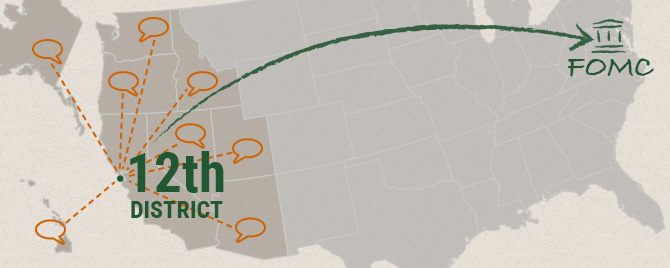How do business and community voices make their way to monetary policy decision makers in Washington, D.C.? Often through Federal Reserve Bank branches.
SF Fed Salt Lake City Branch Manager Robin Rockwood explains, “It’s important for all of us at the Federal Reserve to understand what is happening in the micro-economies from all of the states and the regions that we serve. I interact and meet with a lot of the community and business leaders, and from there I’m able to make connections to use that network to understand more about what’s going on in the local community.”
Retired Portland Branch Manager Steve Walker agrees on the importance of going deep into local communities. “We try to get all the industries that are key to our District so that we can have that type of voice. We also are there for our communities, because we need to be that ear to the ground.”
Los Angeles Branch Manager Roger Replogle says one of his most important responsibilities is to seek out various viewpoints. “We look to get feedback from not only Fortune 100 companies that serve on our Board, but we have community. We have labor. We have small business representation,” he explains.
Information gathered by each Reserve Bank branch is brought to SF Fed economists and President Williams to help inform decisions about monetary policy. Branch managers complement their data-driven counterparts by aiming to understand what’s happening in the 12th District right now.
“We’re really looking at grassroots information, looking forward instead of the post-perspective data that happened three months, six months, a year ago,” says Replogle.
For more information about the responsibilities of SF Fed branch managers, watch Regional Influences on Monetary Policy, part of the 2015 annual report, What We’ve Learned…and why it matters.
You may also want to read:
The views expressed here do not necessarily reflect the views of the management of the Federal Reserve Bank of San Francisco or of the Board of Governors of the Federal Reserve System.
